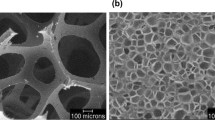Abstract
Large-scale wind turbine blades exceed 50 m in length, and they are currently fashioned as single pieces. Along with the significant challenge of fabricating these blades, there is also an issue of transporting them to field sites, which can account for a substantial portion of the installation cost. Further, typical blades are produced from thermoset composite materials, which cannot be reused at the end of the turbine lifetime. Therefore, a new manufacturing process is developed, forming the blades in smaller segments that can be joined after transportation to the field. The process uses vacuum-assisted thermoforming of thermoplastic composites, which can be recycled after use. Six turbine blades were fabricated from two separate segments composed of two elements each, and they were joined using fusion welding and adhesives. A set of three blades was tested at a small-scale wind farm, producing power outputs on the order of 20 W at low wind speeds, comparable to an existing commercial turbine.
Similar content being viewed by others
Abbreviations
- CLmax :
-
The maximum lift coefficient
- α :
-
The angle of attack
- c :
-
The chord length
- θ p :
-
The pitch angle
- U :
-
The blade velocity
- r :
-
The radius
- P :
-
The power
- Pw :
-
The wind power
- V :
-
The local wind speed
- ρ :
-
The density
- Cp :
-
The power coefficient
References
U.S. Energy Information Administration, “International Energy Statistics,” www.eia.gov (Accessed 16 MAR 2018)
Abedinia, O. and Amjady, N., “Short-Term Wind Power Prediction Based on Hybrid Neural Network and Chaotic Shark Smell Optimization,” Int. J. Precis. Eng. Manuf.-Green Tech., Vol. 2, No. 3, pp. 245–254, 2015.
Kim, H., Kim, K., and Paek, I., “Power Regulation of Upstream Wind Turbines for Power Increase in a Wind Farm,” Int. J. Precis. Eng. Manuf., Vol. 17, No. 5 pp. 665–670. 2016.
Park, Y.-J., Kim, J.-G., Lee, G.-H., Kim, Y.-J., and Oh, J.-Y., “Effects of Bearing Characteristics on Load Distribution and Sharing of Pitch Reducer for Wind Turbine,” Int. J. Precis. Eng. Manuf.-Green Tech., Vol. 3, No. 1, pp. 55–65, 2016.
Sung, C.-M. and Han, M.-C., “Design and Performance Evaluation of Hinge Type Pitch Control System in Small-Size Wind Turbine,” Int. J. Precis. Eng. Manuf.-Green Tech., Vol. 3 No. 4, pp. 335–341, 2016.
Wind Power Monthly, “The Ten Biggest Turbines in the World,” https://www.windpowermonthly.com/10-biggest-turbines (Accessed 16 MAR 2018)
Cotrell, J., Musial, W., and Hughes, S., “Necessity and Requirements of a Collaborative Effort to Develop a Large Wind Turbine Blade Test Facility in North America,” National Renewable Energy Laboratory (NREL) Technical Report #TP-500-38044, 2006.
Brondsted, P., Lilholt, H., and Lystrup, A., “Composite Materials for Wind Power Turbine Blades,” Annual Review of Materials Research, Vol. 35, pp. 505–538, 2005.
Parks, L. G. and Dawson, H., “Wind Turbine Manufacturing in the U.S.: Developments and Considerations,” New York: Nova Science, 1st Ed., 2012.
Bhandari, B., Poudel, S., R., Lee, K. T., Ahn, S. H., “Mathematical Modeling of Hybrid Renewable Energy System: A Review on Small Hydro-Solar-Wind Power Generation,” Int. J. Precis. Eng. Manuf.-Green Tech., Vol. 1, No. 2, pp. 157–173, 2014.
Smith, K., “WindPACT Turbine Design Scaling Studies Technical Area 2 -Turbine, Rotor, and Blade Logistics,” National Renewable Energy Laboratory (NREL) Technical Report, Article ID: SR-500-29439, 2001.
Veers, P. S., Ashwill, T. D., Sutherland, H. J., Laird, D. L., Lobitz, D. W., et al., “Trends in the Design, Manufacture and Evaluation of Wind Turbine Blades,” Wind Energy, Vol. 6, No. 3, pp. 245–259, 2003.
Larsen, K., “Recycling Wind,” Renewable Energy Focus, Vol. 9, No. 7, pp. 70–73, 2009.
Kim, J.-W. and Lee, D.-G., “Study on the Fiber Orientation during Compression Molding of Reinforced Thermoplastic Composites,” Int. J. Precis. Eng. Manuf.-Green Tech., Vol. 1, No. 4, pp. 335–339, 2014.
Bullis, K., “The Quest for the Monster Wind Turbine Blade,” MIT Technology Review, https://www.technologyreview.com/s/ 510031/ the-quest-for-the-monster-wind-turbine-blade (Accessed 16 MAR 2018)
Offringa, A. R., “Thermoplastic Composites -Rapid Processing Applications,” Composites Part A-Applied Science and Manufacturing, Vol. 27, No. 4, pp. 329–336, 1996.
Griffin, D. A. and Ashwill, T. D., “Alternative Composite Materials for Megawatt-Scale Wind Turbine Blades: Design Considerations and Recommended Testing,” Journal of Solar Energy Engineering-Transactions of the ASME, Vol. 125, No. 4, pp. 515–521, 2003.
Grand, J. A., “Wind Power Blades Energize Composites Manufacturing,” Plastics Technology, Vol. 54, No. 10, pp. 68–77, 2008.
Sunforce Products, “600 Watt Marine Turbine,” User’s Manual, 2011.
Hansen, A. C. and Butterfield, C. P., “Aerodynamics of Horizontal-Axis Wind Turbines,” Annual Review of Fluid Mechanics, Vol. 25, pp. 115–149, 1993.
Tangler, J. L., “The Evolution of Rotor and Blade Design,” National Renewable Energy Laboratory (NREL) Technical Report, Article ID: CP-500-28410, 2000.
Drela, M., “XFOIL: An Analysis and Design System for Low Reynolds Number Airfoils,” Low Reynolds Number Aerodynamics, Springer-Verlag, 1989.
Melin, T., “Parametric Airfoil Catalog, Part II: Göttingen 673 to YS930: An Aerodynamic and Geometric Comparison Between Parametrized and Point Cloud Airfoils,” Linköping University Electronic Press, 2013.
Da Rosa, A. V., “Fundamentals of Renewable Energy Processes,” 3rd Ed., Amsterdam: Academic Press, 2013.
Prabhakaran, R. T. D., “Are Reactive Thermoplastic Polymers Suitable for Future Wind Turbine Composite Materials Blades?” Mechanics of Advanced Materials and Structures, Vol. 21 No. 3, pp. 213–221, 2014.
Hodge, B. K., “Alternative Energy Systems and Applications,” John Wiley & Sons, 2009.
Author information
Authors and Affiliations
Corresponding author
Rights and permissions
About this article
Cite this article
Garate, J., Solovitz, S.A. & Kim, D. Fabrication and Performance of Segmented Thermoplastic Composite Wind Turbine Blades. Int. J. of Precis. Eng. and Manuf.-Green Tech. 5, 271–277 (2018). https://doi.org/10.1007/s40684-018-0028-3
Received:
Revised:
Accepted:
Published:
Issue Date:
DOI: https://doi.org/10.1007/s40684-018-0028-3




